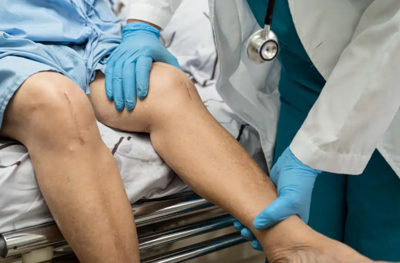
Recovering mobility after knee surgery can be a challenging journey, but with the right exercises and guidance, you can regain strength, flexibility, and function in your knee. Whether you had a meniscus repair, ACL reconstruction, or total knee replacement, starting a carefully planned exercise routine is essential to your recovery.
If you are seeking professional guidance, working with specialists in physical therapy Scranton PA can be highly beneficial. Early intervention and tailored exercises will help you progress safely and avoid setbacks.
In this article, we’ll explore the top five exercises designed to improve mobility after knee surgery, emphasizing gradual progression and proper technique.
Why Mobility Matters After Knee Surgery
Knee surgery often results in stiffness, swelling, and muscle weakness, which can limit your range of motion and overall function. Restoring mobility is vital because:
It reduces stiffness and joint pain.
It helps prevent scar tissue buildup.
It strengthens the muscles supporting the knee.
It improves balance and coordination.
Mobility exercises target the ability to move your knee through its full range without discomfort. Starting these exercises early, with the approval of your healthcare provider, accelerates recovery and enhances long-term outcomes.
1. Heel Slides
Heel slides are a gentle, effective way to increase knee flexion (bending) after surgery.
How to do Heel Slides:
Lie on your back with your legs straight.
Slowly slide your heel toward your buttocks, bending your knee as much as comfortable.
Hold the position for a few seconds, then slowly slide your heel back to the starting position.
Repeat 10-15 times, two to three times daily.
This exercise encourages smooth knee movement and helps prevent stiffness.
2. Quadriceps Sets
Strengthening the quadriceps muscles is crucial for knee stability and mobility.
How to do Quadriceps Sets:
Sit or lie with your leg straight.
Tighten the muscles on the front of your thigh by pushing the back of your knee down toward the floor or bed.
Hold the contraction for 5-10 seconds, then relax.
Repeat 10-15 times, three times daily.
Quadriceps sets help maintain muscle tone and prevent atrophy during early recovery.
3. Straight Leg Raises
Straight leg raises improve muscle strength without putting weight on the knee joint.
How to do Straight Leg Raises:
Lie on your back with one leg bent and the other leg straight.
Tighten your thigh muscles and slowly lift your straight leg about 12 inches off the floor.
Hold for 3-5 seconds, then slowly lower it back down.
Perform 10-15 repetitions on each leg, two to three times a day.
This exercise strengthens your quadriceps and hip flexors, aiding knee support.
4. Standing Hamstring Curls
Hamstring curls help strengthen the muscles behind your thigh, balancing knee function.
How to do Standing Hamstring Curls:
Stand behind a chair or hold onto a sturdy surface for balance.
Slowly bend your knee, bringing your heel toward your buttocks.
Hold the position for 3-5 seconds, then slowly lower your foot back down.
Repeat 10-15 times for each leg, two to three times daily.
Avoid arching your back during this exercise and keep your movements controlled.
5. Calf Raises
Calf raises improve ankle strength and circulation, which supports overall leg function and reduces swelling.
How to do Calf Raises:
Stand with your feet shoulder-width apart, holding onto a chair for support.
Slowly rise onto your toes, lifting your heels off the ground.
Hold for 2-3 seconds, then slowly lower your heels back down.
Repeat 10-15 times, two to three times a day.
This exercise also helps improve balance and walking stability.
Tips for Safe and Effective Mobility Exercises
Consult your doctor or physical therapist before starting any exercise program. They can tailor exercises based on your surgery type and recovery progress.
Warm-up before exercises with gentle movements or a warm towel to reduce stiffness.
Start slowly and gradually increase repetitions and intensity as tolerated.
Avoid any movements that cause sharp pain or swelling. Mild discomfort is normal but pain is a warning sign.
Use ice and elevation after exercising to control swelling.
Stay consistent. Regular practice is key to regaining mobility and strength.
When to Seek Professional Help
While many post-surgery exercises can be done at home, it’s important to seek professional guidance if you experience:
Persistent or worsening pain.
Increased swelling or redness around the knee.
Difficulty bearing weight or walking.
Limited progress after several weeks.
A specialist in physical therapy Scranton PA can provide personalized care, manual therapy, and advanced rehabilitation techniques to optimize your recovery.
Improving mobility after knee surgery is a gradual process that requires patience, commitment, and proper technique. The five exercises outlined—heel slides, quadriceps sets, straight leg raises, standing hamstring curls, and calf raises—form the foundation of an effective post-surgery rehabilitation program.
Always prioritize safety and consult healthcare professionals for guidance tailored to your specific needs. By following a structured routine, you’ll be well on your way to regaining your knee’s strength and flexibility and returning to your daily activities with confidence.





(0) comments
We welcome your comments
Log In
Post a comment as Guest
Keep it Clean. Please avoid obscene, vulgar, lewd, racist or sexually-oriented language.
PLEASE TURN OFF YOUR CAPS LOCK.
Don't Threaten. Threats of harming another person will not be tolerated.
Be Truthful. Don't knowingly lie about anyone or anything.
Be Nice. No racism, sexism or any sort of -ism that is degrading to another person.
Be Proactive. Use the 'Report' link on each comment to let us know of abusive posts.
Share with Us. We'd love to hear eyewitness accounts, the history behind an article.